Best Feed Miller with Mixer | Vertical Animal Feed Solutions
Aug . 21, 2025 19:00 Back to list
Best Feed Miller with Mixer | Vertical Animal Feed Solutions
The Cornerstone of Modern Animal Feed Production: Integrated Milling and Mixing Solutions
In the rapidly evolving landscape of animal husbandry, the efficiency and quality of feed production are paramount. Achieving optimal animal health, growth rates, and feed conversion ratios hinges on the precise formulation and consistent processing of feed ingredients. This requires not just raw materials of high quality, but also sophisticated machinery capable of transforming these ingredients into a homogeneous, highly digestible, and nutritious final product.
At the heart of this transformation lies the feed miller with mixer, an integrated solution that streamlines the entire feed preparation process. Unlike traditional setups that utilize separate grinding and mixing units, an integrated system offers unparalleled advantages in terms of operational efficiency, space utilization, and the final quality of animal feed. Yize Machine, a leader in feed processing equipment, proudly presents its Vertical animal feed mixer with grinder, engineered to meet the rigorous demands of modern feed production facilities, from small-scale farms to large commercial operations.
This comprehensive guide delves into the technical intricacies, operational benefits, and strategic importance of advanced feed milling and mixing technology, ensuring B2B professionals are equipped with the knowledge to make informed decisions for their feed production needs.
Unveiling the Integrated Solution: The Anatomy of a Modern feed miller with mixer
An integrated feed miller with mixer combines two fundamental processes—grinding and mixing—into a single, cohesive unit. This design is crucial for achieving superior feed quality and operational efficiency. The grinding component, typically a hammer mill, reduces raw ingredients like grains, oilseeds, and protein sources to a desired particle size. This process, known as comminution, increases the surface area of the ingredients, improving digestibility and enabling more uniform mixing. Following grinding, the material is then transferred to the mixing chamber, where various ingredients, including concentrates, supplements, and medication, are thoroughly blended to create a homogenous feed ration. The efficiency of such an integrated feed miller with mixer profoundly impacts the overall productivity and profitability of feed operations.
Key Components and Their Functionality:
- Grinding Unit (Hammer Mill): Equipped with high-speed rotating hammers that impact and shatter feed ingredients against a screen. The screen size dictates the final particle size distribution, a critical factor for animal digestion and feed consistency. For instance, fine grinding (e.g., 0.8-1.0 mm screen) is often preferred for swine and poultry, while coarser grinding (e.g., 2.0-3.0 mm) may be suitable for ruminants.
- Mixing Unit (Vertical Auger Mixer): Features a central vertical auger that lifts materials from the bottom of the mixing tank to the top, allowing them to cascade down and be recirculated. This continuous upward and downward movement ensures thorough and uniform blending, achieving a coefficient of variation (CV) of less than 5%, a benchmark for excellent mixing efficiency.
- Feeding System: Often includes hoppers, screw conveyors, or belt conveyors to control the flow of raw materials into the grinding chamber, ensuring a consistent and manageable feed rate, optimizing the performance of the feed miller with mixer.
- Discharge System: After mixing, the finished feed is discharged, often via a screw conveyor, into bagging units, storage bins, or directly to feeding lines.
- Control Panel: Modern systems incorporate intuitive control panels, often with PLC (Programmable Logic Controller) integration, allowing for precise control over grinding time, mixing duration, and sequential operation, enhancing automation and minimizing human error in operating the feed miller with mixer.
The synergy between these components ensures that raw materials are efficiently processed into a high-quality, uniform final product, directly impacting animal performance and farm profitability. The vertical design of the Yize Machine's Vertical animal feed mixer with grinder is particularly beneficial for its compact footprint and effective mixing action.
Precision Engineering: The Manufacturing Process of a Robust Vertical animal feed mixer with grinder
The manufacturing of a high-performance Vertical animal feed mixer with grinder involves a meticulous process, combining advanced materials science with precision engineering techniques. This ensures not only the immediate functionality but also the long-term durability, reliability, and safety of the equipment. Yize Machine adheres to stringent quality control protocols, from raw material sourcing to final assembly and testing for every feed miller with mixer.
Material Selection: The Foundation of Durability
High-grade materials are fundamental. For structural components and parts exposed to abrasive feed materials, robust carbon steel (e.g., Q235, Q345) is commonly used, providing excellent tensile strength and wear resistance. For components that come into contact with sensitive ingredients or require enhanced corrosion resistance, such as certain parts of the mixing chamber or discharge chute, food-grade stainless steel (e.g., SUS304) is employed. Wear-resistant alloys are used for critical components like hammer mill screens and hammers, which are subject to continuous impact and abrasion in a feed miller with mixer.
Advanced Manufacturing Processes:
- Precision Cutting and Forming: Advanced laser cutting or plasma cutting technologies are used to achieve high precision for component fabrication. Steel plates are then bent and formed using hydraulic press brakes to create the complex shapes of the mixing chamber and grinder housing for the feed miller with mixer.
- Automated Welding: Robotic or semi-automated MIG/TIG welding processes ensure strong, consistent, and defect-free seams, crucial for the structural integrity and longevity of the machine. This minimizes stress concentrations and prevents material fatigue.
- CNC Machining: Critical components, such as shafts, bearing housings, and rotor assemblies, undergo Computer Numerical Control (CNC) machining. This highly precise method guarantees tight tolerances, optimal surface finishes, and perfect balance, especially for rotating parts like the hammer mill rotor, which is essential to reduce vibration and extend bearing life for a high-performance feed miller with mixer.
- Surface Treatment: After fabrication, components are meticulously cleaned and often subjected to surface treatments like shot blasting, followed by primer and multiple coats of anti-corrosive paint or powder coating. This protects the machine from rust, environmental degradation, and facilitates easy cleaning, contributing to feed hygiene.
- Dynamic Balancing: Hammer mill rotors are dynamically balanced to eliminate vibrations during high-speed operation, significantly extending the lifespan of bearings and the overall feed miller with mixer.
Rigorous Inspection and Testing Standards:
Every Yize Machine feed miller with mixer undergoes comprehensive quality assurance:
- Material Certification: All incoming raw materials are verified against their material certificates to ensure they meet specified chemical composition and mechanical properties.
- In-Process Inspection: Quality checks are performed at every stage of manufacturing, including dimensional accuracy, weld integrity (visual, ultrasonic, or dye penetrant testing), and surface finish.
- Pre-Assembly Testing: Individual sub-assemblies, like motors and gearboxes, are tested independently before final integration.
- Factory Acceptance Testing (FAT): Each completed machine undergoes rigorous FAT, including no-load and full-load running tests, vibration analysis, noise level checks, power consumption measurements, and crucial mixing uniformity tests (e.g., using tracer elements and analyzing samples for homogeneity). This ensures the machine meets stated performance specifications (e.g., feed miller with mixer.
Design for Longevity and Application:
The robust construction and meticulous manufacturing processes ensure an extended service life, typically exceeding 10-15 years with proper maintenance. The design focuses on ease of maintenance, with accessible wear parts (hammers, screens, bearings) that can be easily replaced, minimizing downtime. This makes the Vertical animal feed mixer with grinder ideal for continuous operation in demanding environments prevalent in the animal husbandry and commercial feed processing industries, including:
- Large-scale Commercial Feed Mills: Where high throughput and consistent quality are critical for producing diverse feed types for multiple species.
- Integrated Livestock Farms: Poultry, swine, cattle, and aquaculture operations that prefer to produce their own custom feed to control costs, freshness, and nutrient profiles, leveraging the benefits of a dedicated feed miller with mixer.
- Feed Ingredient Suppliers: For pre-mixing concentrates or preparing specialized blends before final distribution.
The emphasis on robust design and quality manufacturing translates into significant advantages for end-users, including reduced operational costs, enhanced feed quality, and improved animal performance, ensuring a high return on investment from your feed miller with mixer.
Technical Parameters & Performance Metrics: What to Expect from a High-Performance feed miller with mixer
Understanding the key technical parameters is crucial for selecting the right Vertical animal feed mixer with grinder that aligns with specific production needs. These parameters dictate the machine's capacity, efficiency, and the quality of the final feed product. Below is a table outlining typical specifications for a robust integrated feed milling and mixing system, alongside an explanation of their significance, particularly for a leading feed miller with mixer.
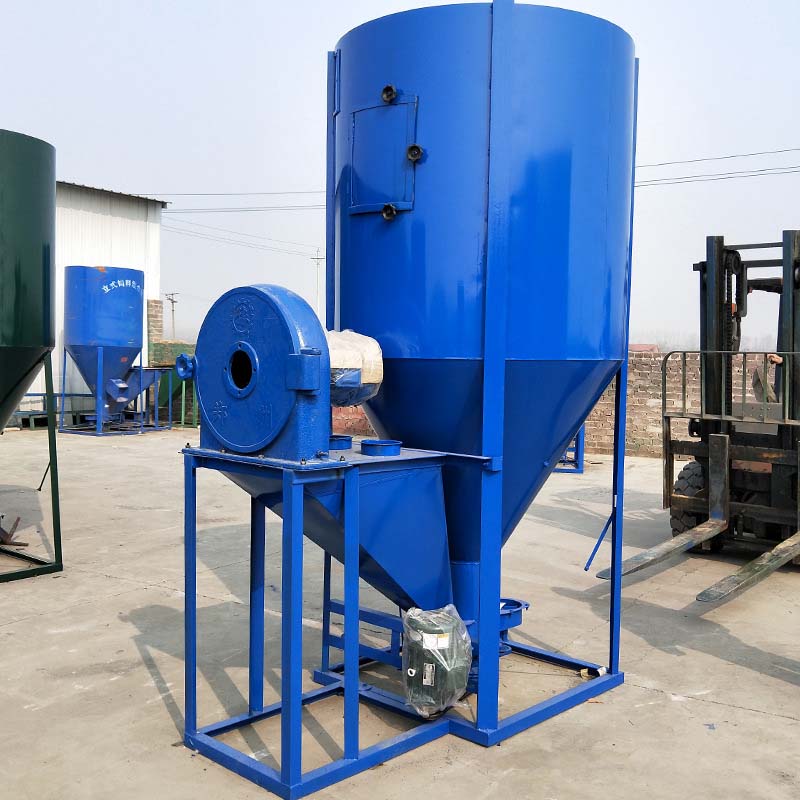
Image: Overview of a high-efficiency feed miller with mixer.
Table 1: Typical Specifications for a Yize Machine feed miller with mixer
| Parameter | Description | Typical Range/Value |
|---|---|---|
| Capacity (Mixer) | Volume of feed processed per batch. Influences overall hourly throughput for the feed miller with mixer. | 500 kg to 5000 kg per batch |
| Grinder Power | Motor power for the hammer mill. Determines grinding efficiency and capacity. | 11 kW to 75 kW (15 HP to 100 HP) |
| Mixer Power | Motor power for the vertical auger mixer. Ensures efficient material circulation. | 3 kW to 15 kW (4 HP to 20 HP) |
| Mixing Uniformity (CV) | Coefficient of Variation. Lower CV indicates better mixing homogeneity. | < 5% (ideal for high-quality feed) |
| Grinding Fineness | Particle size distribution (PSD) post-grinding, determined by screen size. | 0.8 mm to 6.0 mm (adjustable via screens) |
| Batch Cycle Time | Time required for one complete cycle (grinding and mixing) for the feed miller with mixer. | 10-20 minutes (depending on ingredients & fineness) |
| Material of Construction | Primary materials for contact parts and structure. | Carbon Steel, SUS304 Stainless Steel (for critical parts) |
| Dimensions (L x W x H) | Physical footprint of the integrated unit. | Varies significantly by capacity (e.g., 2m x 1.5m x 4m for 1-ton unit) |
| Dust Collection | Integrated dust collectors or provisions for connection. | Standard feature (cyclone separator, bag filter options) |
| Control System | Level of automation and user interface. | Manual, Semi-Automatic, PLC with Touch Screen HMI |
Understanding Performance Metrics:
Coefficient of Variation (CV): This is a statistical measure of mixing efficiency. A CV of less than 5% is widely accepted as an excellent standard for animal feed, indicating that nutrients, minerals, and medications are uniformly distributed throughout the batch. Achieving this low CV ensures every animal receives a consistent diet, optimizing health and productivity. Yize Machine's Vertical animal feed mixer with grinder is designed to consistently meet or exceed this benchmark for an integrated feed miller with mixer.
Energy Efficiency: Modern feed miller with mixer units are designed with energy-efficient motors (IE3/IE4 standards) and optimized mechanical designs to minimize power consumption per ton of feed produced. This translates directly into lower operating costs and a reduced environmental footprint, a growing concern in the agricultural sector. For example, a well-designed grinding unit can achieve an energy consumption of 15-25 kWh per ton of ground material, significantly lower than older or poorly designed systems.
These parameters provide a comprehensive overview of the capabilities and performance of Yize Machine's integrated feed processing solutions, demonstrating their commitment to delivering high-quality, efficient, and reliable machinery, especially their advanced feed miller with mixer line.
Applications and Industry Benefits of Advanced Vertical Feed Mixers for Sale
The versatility and efficiency of a high-quality feed miller with mixer make it an indispensable asset across various segments of the animal feed industry. From small family farms aiming for feed self-sufficiency to large-scale commercial operations requiring high throughput, the integrated system offers tailored benefits.
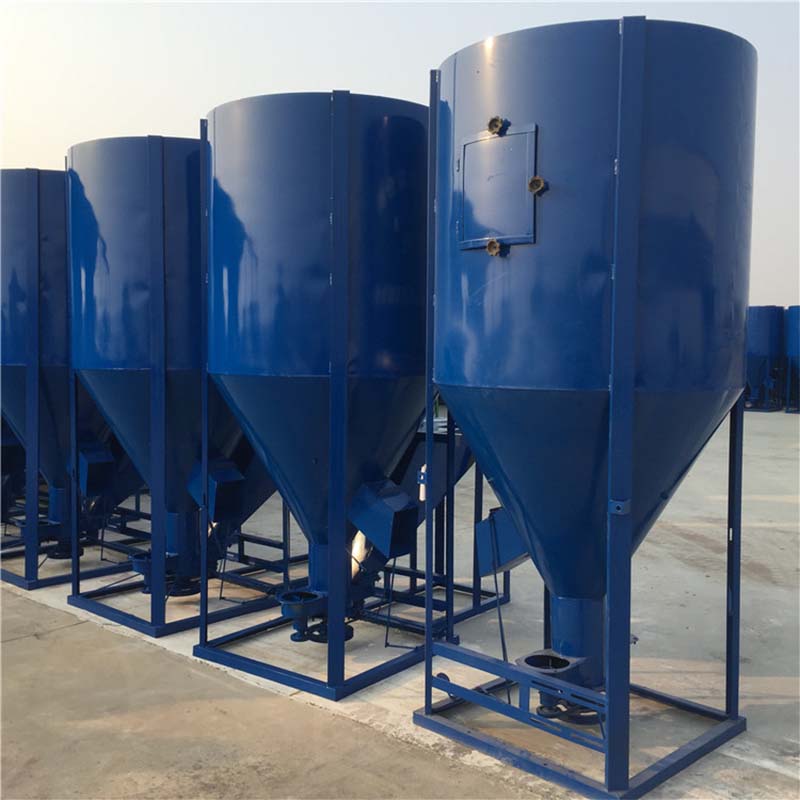
Image: A vertical feed mixer in operation within a modern feed mill.
Primary Application Scenarios:
- On-Farm Feed Production: Many livestock and poultry farmers choose to produce their own feed to gain control over ingredient quality, freshness, and cost. An integrated feed miller with mixer allows them to utilize locally sourced grains and customize feed formulations specific to their animals' age, species, and production stage (e.g., layers, broilers, dairy cows, beef cattle, pigs). This significantly reduces reliance on external feed suppliers and freight costs, leading to substantial savings.
- Small to Medium-Sized Commercial Feed Mills: These mills often serve regional markets or specialize in niche feed products. The compact design and efficient operation of vertical feed mixers make them ideal for facilities with limited space. They can produce diverse feed types for various animal species, including specialized pet food, aquaculture feed, or organic feed blends, allowing for market diversification. A robust feed miller with mixer is a key asset here.
- Research and Development Facilities: Universities, research institutions, and feed additive manufacturers use these units for experimental feed formulation, testing new ingredients, and developing innovative feeding strategies on a smaller, controlled scale. The precise control over particle size and mixing uniformity is critical for accurate research outcomes provided by a high-quality feed miller with mixer.
Strategic Advantages in Application:
- Cost-Effectiveness: By enabling in-house feed production, farms and small mills can reduce reliance on expensive commercial feeds. The ability to purchase raw ingredients in bulk and process them efficiently translates into significant savings on feed costs, which typically account for 60-70% of total livestock production expenses, especially with an optimized feed miller with mixer.
- Enhanced Feed Quality & Freshness: Freshly milled and mixed feed retains its nutritional value better. Farmers can ensure that their animals receive feed free from stale ingredients or contaminants, directly impacting animal health, disease resistance, and overall productivity. The precise control over formulation also allows for tailoring diets to specific growth stages, leading to optimized feed conversion rates (FCR). For instance, a 5% improvement in FCR can lead to substantial financial gains over a production cycle, aided by consistent output from the feed miller with mixer.
- Biosecurity & Traceability: Producing feed on-site reduces the risk of introducing pathogens from external sources. Additionally, a farmer has full traceability of ingredients, enhancing the safety and quality assurance of their animal products, which is increasingly demanded by consumers and regulators.
- Operational Flexibility: An integrated system allows for rapid adjustment of feed formulations based on changing market prices of ingredients, animal health status, or specific nutritional requirements. This adaptability is invaluable in dynamic agricultural markets.
The strategic implementation of a high-quality vertical feed mixers for sale like the Yize Machine Vertical animal feed mixer with grinder provides a competitive edge, fostering sustainable and profitable animal production practices.
Technical Superiority: Why Integrated animal feed mixer Systems Excel
The decision to invest in an integrated animal feed mixer system, rather than separate grinding and mixing units, yields a multitude of technical and operational advantages. These benefits directly translate into higher productivity, reduced costs, and a superior end product, solidifying the rationale for choosing Yize Machine's comprehensive solutions, especially its leading feed miller with mixer.
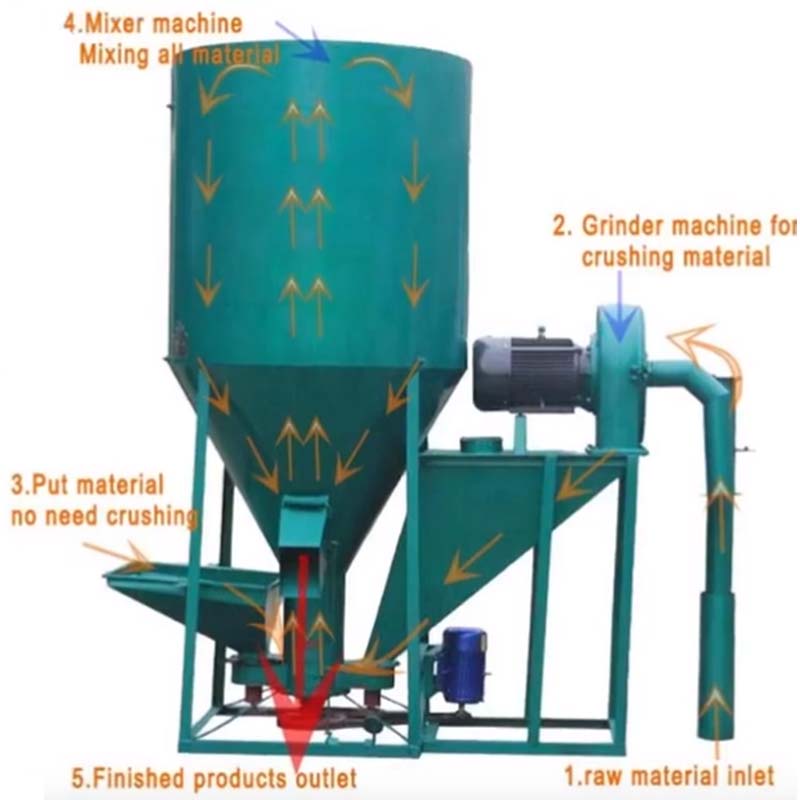
Image: Internal view of an animal feed mixer highlighting mixing auger.
Key Advantages:
- Streamlined Process and Enhanced Efficiency: Integrating the grinder and mixer eliminates the need for intermediate material handling and transfer systems, such as conveyors or elevators, between the two stages. This reduces material loss, minimizes potential for contamination, and significantly shortens the overall batch processing time. A typical integrated system, like a Yize Machine feed miller with mixer, can complete a batch (grinding and mixing) in 15-20 minutes, compared to 30-40 minutes for separate units, leading to higher hourly throughput.
- Optimal Particle Size Distribution (PSD): The integrated design allows for precise control over grinding fineness, directly influencing feed digestibility and mixing uniformity. For instance, fine grinding for poultry feed (e.g., 600-900 microns) is critical for nutrient absorption. The integrated unit ensures the ground material immediately enters the mixer, preventing segregation and maintaining the desired PSD throughout the process of the feed miller with mixer.
- Superior Mixing Homogeneity: Vertical mixers, like those in Yize Machine's integrated units, excel at achieving high mixing uniformity, typically with a Coefficient of Variation (CV) below 5%. This is crucial for distributing micro-ingredients (vitamins, minerals, medications) evenly throughout the feed. Inconsistent mixing can lead to nutritional deficiencies or toxicities in animals, impacting their health and productivity.
- Reduced Energy Consumption: By eliminating redundant motors and transfer mechanisms, integrated systems often consume less energy per ton of feed produced. For example, some studies suggest energy savings of 10-15% compared to separate systems, contributing to lower operational costs and a smaller carbon footprint from the feed miller with mixer.
- Space Optimization: The vertical, compact design of these integrated units makes them ideal for facilities with limited floor space. This is particularly advantageous for on-farm feed production or smaller commercial mills where efficient layout is critical for the feed miller with mixer.
- Lower Labor Requirements: Automation features, such as timed grinding and mixing cycles and integrated controls, reduce the need for constant manual oversight, allowing operators to manage other tasks. This lowers labor costs and improves overall operational efficiency.
- Enhanced Hygiene and Safety: Fewer transfer points mean less dust generation and easier cleaning, leading to a more hygienic feed production environment. Integrated safety interlocks and robust guarding mechanisms protect operators from moving parts, ensuring compliance with industrial safety standards. Dust collection systems, often integrated or easily connectable, further enhance air quality around the feed miller with mixer.
- Simplified Installation and Maintenance: A single, pre-assembled unit is generally easier and quicker to install than two separate machines requiring independent foundations and interconnections. Maintenance is also simplified, with a single point of access for many wear parts.
The Yize Machine Vertical animal feed mixer with grinder embodies these advantages, offering a robust, efficient, and reliable solution that stands out in the market of vertical feed mixers for sale.
Industry Trends and Future Innovations in feed mixer Technology
The animal feed industry is dynamic, driven by global demands for protein, sustainability concerns, and technological advancements. Feed mixing technology, particularly for integrated systems like the feed miller with mixer, is evolving rapidly to meet these challenges. Understanding these trends is crucial for businesses aiming to stay competitive and efficient.
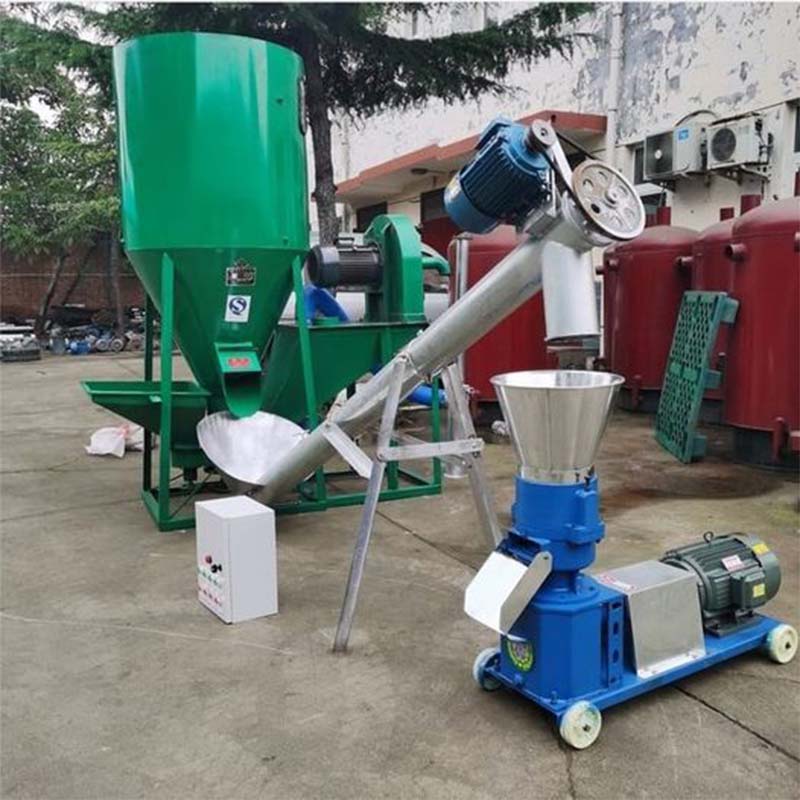
Image: Advanced control panel for a modern feed mixer.
Emerging Trends:
- Increased Automation and IoT Integration: The shift towards fully automated feed mills is accelerating. Modern feed mixer units are increasingly incorporating advanced PLC-based control systems, often with Human-Machine Interface (HMI) touchscreens, allowing for precise recipe management, batch sequencing, and real-time monitoring. The Internet of Things (IoT) connectivity enables remote monitoring, predictive maintenance, and data analytics, optimizing operational efficiency and minimizing downtime for the feed miller with mixer.
- Enhanced Energy Efficiency: With rising energy costs and environmental pressures, manufacturers are focusing on developing more energy-efficient designs. This includes implementing high-efficiency motors (e.g., IE4 standard), optimizing auger designs for reduced power consumption, and incorporating variable frequency drives (VFDs) to match motor speed to load requirements, leading to significant energy savings for the feed miller with mixer.
- Modular and Customizable Designs: To cater to diverse operational scales and specific customer needs, manufacturers are offering more modular and customizable systems. This allows for easier expansion, integration with existing infrastructure, and tailored solutions for unique feed formulations or animal types. Yize Machine excels in providing such bespoke solutions for a feed miller with mixer.
- Focus on Feed Safety and Traceability: Growing concerns over food safety and animal health are driving demand for equipment that facilitates stringent hygiene standards and complete traceability of ingredients. Features like easy-to-clean designs, stainless steel contact surfaces, and integrated batch tracking systems are becoming standard for advanced feed miller with mixer units.
- Advanced Sensor Technologies: Integration of sensors for real-time moisture content, temperature, and even ingredient flow can further optimize the grinding and mixing process, ensuring consistent quality and preventing material waste.
- Sustainability Initiatives: Beyond energy efficiency, future trends will likely include machinery designed for minimal waste generation, quieter operation, and features that support the processing of alternative, sustainable feed ingredients.
These trends underscore the importance of investing in cutting-edge technology like Yize Machine's Vertical animal feed mixer with grinder to remain at the forefront of feed production innovation.
Comparative Analysis: Vertical vs. Horizontal Feed Mixers and Manufacturer Selection
When considering an animal feed mixer, potential buyers often evaluate different types, primarily vertical and horizontal mixers. While both serve the purpose of blending feed, their design and operational characteristics make them suitable for different applications. This section also outlines key considerations when selecting a manufacturer for your optimal feed miller with mixer.
Table 2: Vertical vs. Horizontal Feed Mixer Comparison
| Feature | Vertical Feed Mixer (e.g., Yize Machine feed miller with mixer) | Horizontal Feed Mixer (Paddle/Ribbon) |
|---|---|---|
| Design & Footprint | Tall, compact vertical design; saves floor space, ideal for integrated feed miller with mixer setups. | Longer, wider horizontal design; requires more floor space. |
| Mixing Mechanism | Single/dual vertical auger lifts and cascades material. | Ribbons or paddles rotate horizontally, pushing material in opposite directions. |
| Mixing Speed | Generally slower mixing cycles (10-20 min) but highly effective for dry feeds in a feed miller with mixer. | Faster mixing cycles (3-5 min). |
| Mixing Uniformity (CV) | Excellent for dry powders and coarse materials (<5% CV achievable). | Excellent, especially for incorporating liquids or sticky ingredients. |
| Energy Consumption | Relatively lower power consumption per ton. | Higher power consumption due to faster rotation and heavier mixing action. |
| Maintenance & Cleaning | Simpler design, generally easier to maintain. Can have material residue. | More complex, can be harder to clean thoroughly, especially with sticky ingredients. |
| Cost | Generally more economical for integrated milling and mixing, such as a feed miller with mixer. | Higher initial investment, especially for larger capacities. |
| Best For | Small to medium farms, integrated units, dry feed, when space is limited. | Large commercial mills, wet/liquid ingredients, high throughput, very fine particles. |
Yize Machine's specialization in vertical feed mixers, particularly the integrated feed miller with mixer, addresses the common needs of on-farm and small-to-medium scale commercial feed production for its efficiency, compact design, and excellent dry material mixing uniformity.
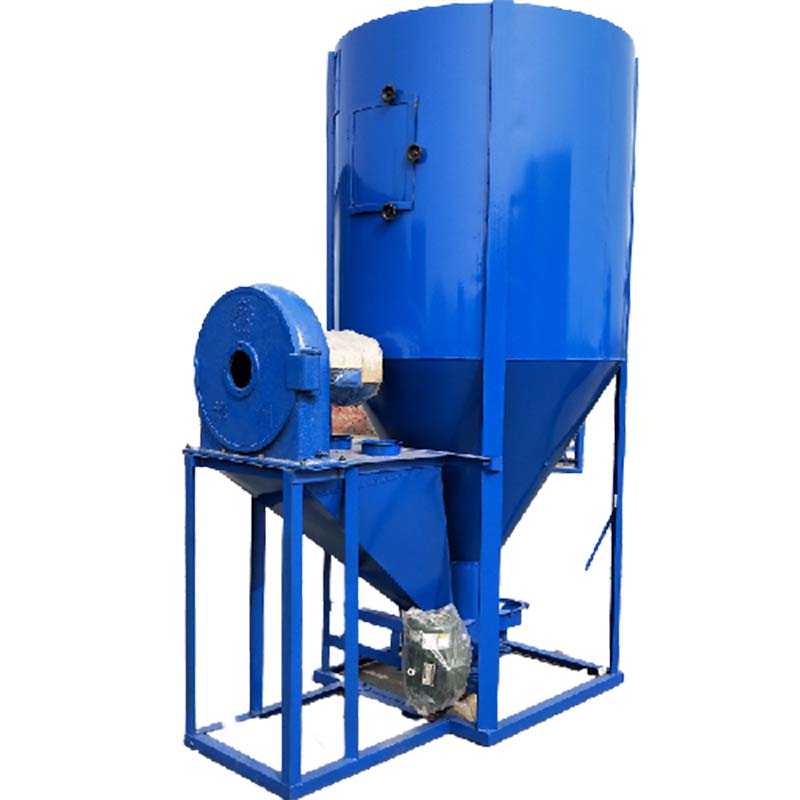
Image: Different types of feed processing equipment, highlighting integrated solutions.
Key Criteria for Manufacturer Selection:
- Reputation and Experience: Look for manufacturers with a proven track record in the feed machinery industry. Yize Machine boasts years of experience and a strong reputation for reliable equipment, including advanced feed miller with mixer systems.
- Quality and Certification: Verify that the manufacturer adheres to international quality standards (e.g., ISO 9001) and that products meet relevant safety and performance certifications (e.g., CE marking).
- Technical Expertise and Customization: A good manufacturer should offer deep technical knowledge and the ability to customize solutions to specific client requirements, rather than just off-the-shelf products. This is especially true for a complex piece of equipment like a feed miller with mixer.
- After-Sales Support and Spare Parts: Reliable technical support, readily available spare parts, and comprehensive warranty policies are critical for minimizing downtime and ensuring long-term operational success.
- Innovation and R&D: Manufacturers who invest in research and development are more likely to offer cutting-edge, energy-efficient, and technologically advanced solutions.
- Customer Feedback and Case Studies: Reviewing testimonials and case studies provides real-world insights into the manufacturer's product performance and customer satisfaction.
By carefully evaluating these factors, businesses can ensure they partner with a manufacturer that delivers durable, high-performing, and economically viable feed processing solutions.
Customized Solutions and Real-World Impact: Yize Machine Case Studies
One of Yize Machine's core strengths lies in its ability to provide customized feed mixer solutions that precisely meet the unique operational demands of diverse clients. Understanding that no two feed production facilities are identical, our team of experts works closely with clients from initial consultation to successful commissioning, ensuring optimal integration and performance of our Vertical animal feed mixer with grinder systems.
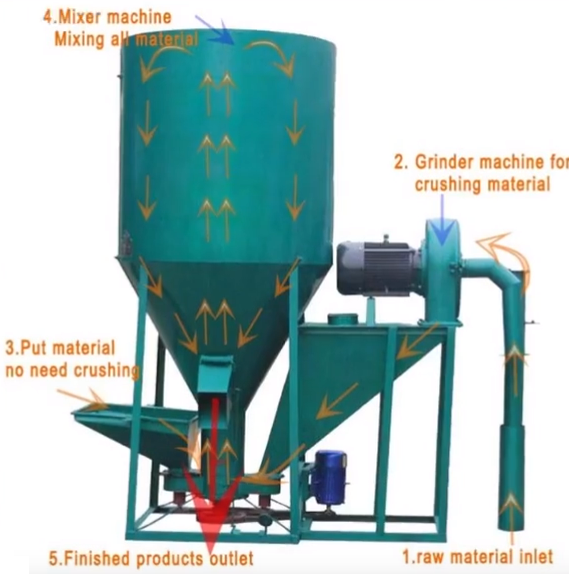
Image: Detailed schematic of a Vertical animal feed mixer with grinder.
Tailored Solutions for Specific Needs:
- Capacity Scalability: Whether a client requires a compact 500 kg batch system for a family farm or a multi-ton integrated plant for a large commercial feed mill, Yize Machine offers scalable solutions. This includes varying grinder motor sizes (e.g., from 11kW to 75kW) and mixer capacities to match desired throughput for the specific feed miller with mixer model.
- Automation Levels: From semi-automatic systems with manual ingredient loading to fully automated PLC-controlled systems integrated with weighing scales and batching software, Yize Machine can configure the level of automation to suit operational preferences and budget for a new feed miller with mixer.
- Material Compatibility: For clients handling specific or abrasive ingredients, customization includes using specialized wear-resistant alloys for hammers and screens, or stainless steel for contact surfaces to prevent corrosion and ensure hygienic processing within the feed miller with mixer.
- Integration with Existing Infrastructure: Our engineers can design solutions that seamlessly integrate with existing silos, conveyors, or pelletizing lines, minimizing disruption and maximizing overall plant efficiency.
Client Success Stories:
These examples illustrate the tangible benefits realized by clients who have partnered with Yize Machine for their feed processing needs, highlighting the effectiveness of the feed miller with mixer:
- Case Study 1: Large-Scale Poultry Farm in Southeast Asia
A major poultry farm faced challenges with inconsistent feed quality and high feed costs. They opted for a customized Yize Machine 2-ton/batch feed miller with mixer. Within six months of installation, the farm reported a 7% improvement in Feed Conversion Ratio (FCR) across their broiler flocks and a 15% reduction in feed expenses due to in-house production and bulk ingredient purchasing. The integrated dust collection system also significantly improved air quality in their feed preparation area, enhancing worker comfort and compliance with local regulations. - Case Study 2: Swine Breeding Operation in Eastern Europe
A rapidly expanding swine breeding facility required a flexible system to produce different feed formulations for piglets, growers, and sows. Yize Machine supplied a 1-ton vertical animal feed mixer with grinder equipped with multiple interchangeable screens and a PLC-controlled batching system. This allowed the client to precisely tailor diets, resulting in a noticeable reduction in digestive issues among piglets and improved litter sizes for sows, directly attributable to the consistently high-quality, customized feed from their new feed miller with mixer. - Case Study 3: Regional Commercial Feed Producer in Latin America
This client needed to upgrade an outdated facility to improve efficiency and meet increasing demand for various animal feeds. They implemented a series of Yize Machine's vertical feed mixers for sale, ranging from 500kg to 3-ton capacities, integrated into their existing material handling system. The compact footprint of the vertical mixers allowed for better utilization of their existing facility space, while the improved mixing uniformity and faster grinding cycles increased their overall production capacity by 30% without requiring a major facility expansion, thanks to the robust performance of the feed miller with mixer.
These examples demonstrate Yize Machine's capability to deliver high-impact solutions, proving that investing in a quality feed miller with mixer is a strategic move for sustainable growth in animal agriculture.
Ensuring Trustworthiness: Yize Machine's Commitment to Quality and Support
At Yize Machine, building trust with our B2B clients is paramount. This commitment extends beyond providing high-quality feed miller with mixer equipment; it encompasses stringent adherence to international standards, comprehensive after-sales support, and transparent operational practices. Our aim is to ensure peace of mind and long-term value for every investment in our Vertical animal feed mixer with grinder.
Certifications and Quality Assurance:
- ISO 9001 Certified: Our manufacturing processes and quality management systems are certified to ISO 9001 standards, ensuring consistent product quality, continuous improvement, and customer satisfaction.
- CE Marking: All relevant Yize Machine equipment, including our animal feed mixer systems, carries the CE mark, signifying compliance with European Union health, safety, and environmental protection standards.
- Rigorous Testing: As detailed in the manufacturing section, every unit undergoes extensive Factory Acceptance Testing (FAT), including performance validation, safety checks, and mixing uniformity assessments, before shipment. This ensures every feed miller with mixer meets our high standards.
Comprehensive After-Sales Support:
- Warranty Assurance: Yize Machine provides a standard 12-month warranty on all mechanical and electrical components, covering manufacturing defects and ensuring reliable operation for your feed miller with mixer. Extended warranty options are also available.
- Technical Assistance: Our dedicated technical support team is available to provide remote assistance, troubleshooting, and expert advice for installation, operation, and maintenance queries.
- Spare Parts Availability: We maintain a comprehensive inventory of genuine spare parts, ensuring prompt availability and minimal downtime for our clients globally. Critical wear parts are always stocked for every feed miller with mixer.
- Installation and Training Services: For complex installations, Yize Machine offers on-site supervision and training by experienced engineers, empowering client staff with the knowledge and skills for efficient operation and routine maintenance.
Delivery and Logistics:
We understand the importance of timely delivery for your project schedules. Our typical lead time for standard Vertical animal feed mixer with grinder models ranges from 30 to 45 business days, depending on customization requirements and current production schedules. We work with reputable logistics partners to ensure secure and efficient worldwide delivery, providing detailed shipping updates throughout the process for your new feed miller with mixer.
Frequently Asked Questions (FAQ) about feed miller with mixer:
A1: Optimal particle size varies. For poultry (especially broilers), a finer grind (600-900 microns) improves digestibility. For swine, 700-1000 microns is common. Ruminants (cattle) often benefit from coarser grinds (1500-3000 microns) to promote rumination and prevent acidosis. Our feed miller with mixer allows for easy screen changes to achieve desired fineness.
Q2: How often do the hammers and screens need to be replaced?A2: The lifespan of hammers and screens depends on the type of material being ground, daily operating hours, and maintenance practices. Generally, hammers can last from 3-6 months, and screens 6-12 months under typical operating conditions. We provide durable, high-quality wear parts and guidance on rotation and replacement schedules for your feed miller with mixer.
Q3: Can the mixer handle liquid additives?A3: While vertical mixers are primarily designed for dry ingredients, small quantities of liquid additives (e.g., oils, molasses) can be incorporated. For higher volumes or precise liquid addition, an optional liquid dosing system can be integrated. Our technical team can advise on specific application requirements for your feed miller with mixer.
Q4: What are the power requirements for these machines?A4: Power requirements vary based on machine capacity and grinder size, typically ranging from 15 HP to 100 HP for the grinder and 4 HP to 20 HP for the mixer. We configure the motors to match local electrical supply (voltage, phase, frequency) for seamless integration.
Q5: Is dust a concern with the grinding process?A5: Our feed miller with mixer systems are designed with integrated or connectable dust collection solutions, such as cyclone separators and bag filters, to minimize airborne dust, ensuring a cleaner and safer working environment and preventing material loss.
This dedication to quality, support, and transparency underscores Yize Machine's role as a trusted partner in the animal feed industry.
Conclusion: Powering Progress in Animal Feed Production with Yize Machine
The demand for high-quality, efficiently produced animal feed continues to grow globally. The integrated Vertical animal feed mixer with grinder stands as a testament to engineering innovation, offering a powerful, precise, and practical solution for modern feed production challenges. From ensuring optimal particle size distribution and unparalleled mixing uniformity to delivering significant operational cost savings and enhanced biosecurity, the advantages of a robust feed miller with mixer are undeniable.
Yize Machine is committed to advancing the capabilities of the feed industry through its meticulously engineered and thoroughly tested equipment. Our expertise in designing and manufacturing integrated solutions, coupled with a deep understanding of industry trends and a steadfast commitment to customer success, positions us as an ideal partner for businesses seeking to optimize their feed processing operations. Investing in a Yize Machine feed miller with mixer is not merely purchasing equipment; it's investing in efficiency, quality, and a sustainable future for your animal husbandry enterprise.
Empower your feed production with technology that sets new standards for performance and reliability. Choose Yize Machine for an integrated solution that drives your success from farm to market.
References
- American Society of Agricultural and Biological Engineers (ASABE) Standards. (Current Year). ASABE S319.4: Method of Determining and Expressing Fineness of Feed Materials by Sieving.
- Journal of Animal Science. (Various Issues). Articles on feed processing, particle size, and mixing efficiency in livestock nutrition.
- Feed Manufacturing Technology. (5th Edition or latest). American Feed Industry Association (AFIA) Publication.
- FAO Corporate Document Repository. (Various Publications). Guidelines on small-scale feed manufacturing and quality control.
- Poultry Science. (Various Issues). Research papers on the impact of feed particle size and mixer performance on poultry growth and health.
- International Organization for Standardization (ISO). (Current Year). ISO 9001: Quality management systems – Requirements.
-
Efficient & Sustainable Chick Brooding Cage Systems for Modern Poultry Farming
NewsNov.24,2025
-
Cage for Chick: Optimizing Poultry Care for Global Food Security
NewsNov.23,2025
-
Baby Chicks Cage – Global Solutions for Sustainable Poultry Farming
NewsNov.22,2025
-
Baby Chick Cage: The Essential Guide to Brooding Solutions for Poultry Farmers
NewsNov.22,2025
-
Understanding Square Grain Silos: Global Impact, Benefits, and Trends
NewsNov.21,2025
-
Automatic Feeding Line System-Anping County Yize Metal Products Co., Ltd.|Automated Feeding&Watering
NewsNov.21,2025






